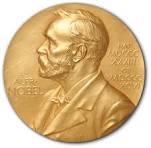
On October 2nd the Royal Swedish Academy of Sciences announced this year’s Noble prize in physics was being awarded “for groundbreaking inventions in the field of laser physics.” This year’s award is to be split between two different inventions optical tweezers and chirped pulse amplification (which lead to the development of attosecond pulse generation). Arthur Ashkin from Bell Labs was awarded one half of the prize for his work on optical tweezers, while Gerard Mourou from Ecole Polytechnique and Donna Strickland from the University of Waterloo where jointly awarded the other half for their ultra-fast research.
Each of these inventions in laser physics allowed for the furtherment of not only our fundamental understanding of physics but also leads to breakthroughs in industrial and medical applications as well. This was especially true for Ashkin’s work with optical tweezers, which was almost immediately implemented in biological applications for the non-contact manipulation of objects under a microscope. The contributions of Mourou and Strickland are no less significant, because the ability to generate laser pulses with attosecond pulse widths, has enabled researched to take measurements at such high speeds that they can study material dynamics at speeds fast enough to observe the measurements of electrons moving within atoms and molecules.
It is important to point out that with the awarding of this year’s prize, Donna Strickland is the first woman to have received the Nobel prize in physics in 55 years and is only the third woman in history to receive the prize putting her in the esteemed company of Marie Curie (1903) and Maria Goeppert-Mayer (1963). When asked for comment Strickland was quoted saying “We need to celebrate women physicists because we’re out there, and maybe in time it will move forward. I’m honored to be one of those women.” Additionally it should be noted that, Ashkin is now officially the oldest person to receive a Nobel prize at the age of 96, finally recognizing the importance of his research performed in the 70’s and 80’s.
The official press release from the Royal Swedish Academy of Sciences can be read in full by clicking here.

 SHIPS TODAY
SHIPS TODAY 